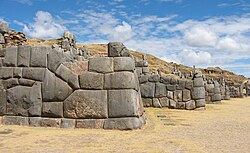History of technology
The history of technology is the history of the invention of tools and techniques, and is similar in many ways to the history of humanity.
People make new things and, conversely, many scientific endeavors are possible through technologies. Technology lets us travel to places we could not otherwise go, and probe the nature of the universe in more detail than our natural senses allow.
Technological artifacts are products of an economy, a force for economic growth, and a large part of everyday life. Technological innovations affect, and are affected by, a society's cultural traditions. They also are a means to develop and project military power.
What are the great technologies?
- The hand axe: used for about 1.5 million years, from Homo erectus to neolithic man. Basically a tool for butchering large animals which were probably killed by wooden spears. Not for nothing did a curator at the British Museum use the phrase Man the Toolmaker.[1]
- Fire, which would have occurred naturally in the drier environments of the savannah. The date of the first deliberate use of fire for warmth, protection and cooking is not known.
- The city: we can date this to about 8,000 years ago in the fertile crescent.
- Writing: the means of trade, education and cultural transmission from one generation to another. About 3300 BC.[2]
History Of Technology Media
The wheel, invented sometime before the 4th millennium BC, is one of the most ubiquitous and important technologies. This detail of the "Standard of Ur", c. 2500 BCE., displays a Sumerian chariot.
A late Bronze Age sword or dagger blade
The compartmented water wheel, here its overshot version
Pont du Gard in France, a Roman aqueduct
Clock from Salisbury Cathedral, ca. 1386
A water-powered mine hoist used for raising ore, ca. 1556











